Introduction
Chilled Eight-Treasure Soup, often hailed as a jewel of Asian cuisine, is a vibrant, sweet, and refreshing dessert that has delighted generations during scorching summers. This iconic dish, also known as “Ba Bao Tang” in Mandarin, combines a medley of textures and flavors—chewy, crunchy, and tender ingredients bathed in a fragrant, sweet syrup. Rooted in Chinese tradition, this soup is not merely a treat for the palate but a symbol of harmony, as each of the eight ingredients represents prosperity, health, and good fortune. Perfect for gatherings, family meals, or a personal indulgence, this recipe transforms simple, wholesome ingredients into a masterpiece of culinary art. Let’s dive into the art of crafting this timeless dessert, from selecting the finest components to achieving the ideal balance of sweetness and chill.
The Essence of Eight Treasures
The name “Eight-Treasure Soup” derives from the eight primary ingredients, each chosen for its unique taste, texture, and symbolic significance. While variations exist across regions and families, the core components typically include:
- Lotus Seeds (Lian Zi): Renowned for their delicate, floral aroma and nutritional benefits.
- Red Adzuki Beans (Chi Xiao Dou): A staple in Asian desserts, offering a creamy texture when cooked.
- Tapioca Pearls (Xiao Mi Zhu): Adding a chewy, translucent element to the soup.
- Job’s Tears (Yi Yi Ren): A grain-like seed with a subtle nutty flavor.
- Dried Longan (Long Yan Rou): Sweet, caramel-like dried fruit with a chewy texture.
- Barley (Da Mai): Contributes a tender, slightly chewy bite.
- Mung Beans (Lu Dou): Known for their cooling properties and buttery texture.
- Ginkgo Nuts (Bai Guo): Delicate, slightly bitter nuts that balance the soup’s sweetness.
These ingredients are often complemented by rock sugar for sweetness, water for the broth, and optional toppings like coconut milk, fresh fruit, or mint leaves for garnish.
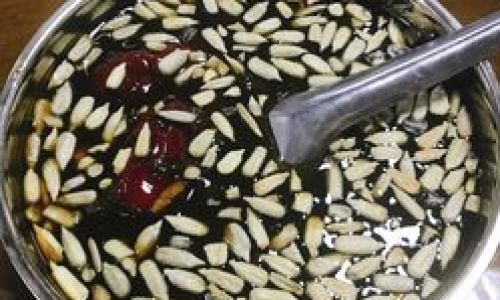
Ingredients: Quantities and Preparation
To serve 6–8 people, gather the following:
- ½ cup dried lotus seeds (soaked overnight, hulled if preferred)
- ½ cup red adzuki beans (rinsed and soaked for 4 hours)
- ½ cup tapioca pearls (small variety, rinsed)
- ½ cup job’s tears (rinsed and soaked for 2 hours)
- ½ cup dried longan (rinsed)
- ½ cup pearl barley (rinsed and soaked for 1 hour)
- ½ cup mung beans (rinsed and soaked for 2 hours)
- ¼ cup ginkgo nuts (shelled and blanched to remove bitterness)
- 5 liters water
- 1 cup rock sugar (adjust to taste)
- Optional: 1 can coconut milk, sliced mango, or crushed ice for serving.
Step-by-Step Cooking Process
Preparing the Base
Start by boiling the water in a large pot. While waiting, drain the soaked ingredients (lotus seeds, adzuki beans, job’s tears, barley, and mung beans). Soaking reduces cooking time and ensures even texture.
Cooking the Ingredients
- Lotus Seeds: Add to the boiling water and simmer for 20–25 minutes until tender. Remove with a slotted spoon and set aside.
- Red Adzuki Beans: In the same pot, add the beans and simmer for 30–35 minutes until soft. Mash a few beans against the pot’s side to thicken the broth.
- Job’s Tears and Barley: Add these to the pot and cook for 20 minutes until translucent.
- Mung Beans: Stir in and cook for 15 minutes until they burst open.
- Tapioca Pearls: In a separate small pot, boil water and cook the pearls for 10–12 minutes until translucent. Rinse under cold water to prevent sticking.
- Ginkgo Nuts: Add to the main pot in the last 5 minutes of cooking.
- Dried Longan: Toss in during the final 2 minutes to retain their plump texture.
Sweetening the Broth
Once all ingredients are tender, stir in the rock sugar. Simmer for 5–7 minutes, stirring gently to dissolve the sugar completely. Taste and adjust sweetness if needed.
Chilling the Soup
Remove the pot from heat and let the soup cool to room temperature. Transfer to a large container and refrigerate for at least 4 hours, or overnight for optimal flavor development. The chilling process allows the ingredients to meld, creating a harmonious taste profile.
Assembling and Serving
When ready to serve, ladle the chilled soup into bowls or glasses. For an extra touch of indulgence:
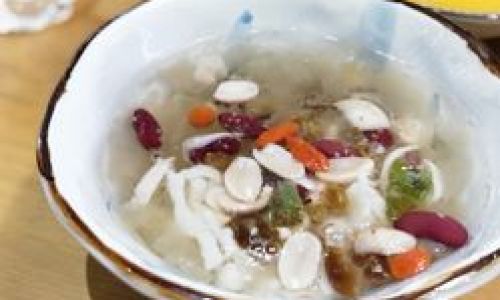
- Drizzle with coconut milk or almond milk.
- Top with fresh mango cubes, lychee slices, or a sprinkle of toasted sesame seeds.
- Serve over crushed ice for an icy contrast.
Pro Tips for Perfection
- Soaking Strategy: Pre-soak harder ingredients like lotus seeds and beans to expedite cooking.
- Texture Control: For a thicker soup, mash a portion of the beans or add a tablespoon of cornstarch mixed with water during simmering.
- Sweetness Balance: Rock sugar imparts a clean sweetness without overwhelming the natural flavors. Adjust based on the ripeness of your dried longan.
- Ginkgo Nuts: Blanch shelled nuts in boiling water for 2 minutes to eliminate bitterness before adding to the pot.
Cultural Significance and Health Benefits
Beyond its culinary appeal, Chilled Eight-Treasure Soup carries deep cultural weight. Served during festivals, weddings, and Lunar New Year celebrations, it symbolizes unity and abundance. Each ingredient is believed to bestow specific benefits: lotus seeds for heart health, adzuki beans for detoxification, and ginkgo nuts for cognitive function. Naturally gluten-free and rich in fiber, this dessert is a guilt-free pleasure that cools the body and nourishes the soul.
Creative Variations
Modern adaptations of this classic recipe abound. Experiment with:
- Fruit Infusions: Add diced papaya, watermelon, or kiwi for a tropical twist.
- Herbal Additions: Include chrysanthemum petals or goji berries for a floral note.
- Dairy-Free Options: Substitute coconut milk with oat milk or almond milk for a vegan-friendly version.
- Savory-Sweet Hybrid: Sprinkle toasted coconut or crushed pistachios for texture contrast.
Troubleshooting Common Issues
- Mushy Tapioca: Overcooking pearls results in a gluey texture. Cook until just translucent and rinse immediately.
- Cloudy Broth: Avoid stirring vigorously during cooking to maintain clarity.
- Bitter Aftertaste: Ensure ginkgo nuts are properly blanched and added sparingly.
Pairing Suggestions
Elevate your Eight-Treasure Soup experience by pairing it with:
- Crispy Spring Rolls: The contrast between the crunchy rolls and silky soup is divine.
- Green Tea: A light, grassy tea complements the soup’s sweetness without overpowering it.
- Fresh Fruit Platters: Balance the richness with slices of watermelon, pineapple, or mango.
Conclusion
Chilled Eight-Treasure Soup is more than a dessert—it’s a labor of love, a celebration of tradition, and a testament to the beauty of simplicity. By mastering the balance of textures, sweetness, and chill, you create a dish that transcends cultural boundaries, offering a taste of Asia’s culinary heritage in every spoonful. Whether enjoyed under the summer sun or as a nostalgic reminder of home, this soup invites you to savor the harmony of eight treasures in perfect unity. So gather your ingredients, embrace the rhythm of simmering and chilling, and indulge in a bowl of pure, refreshing bliss.
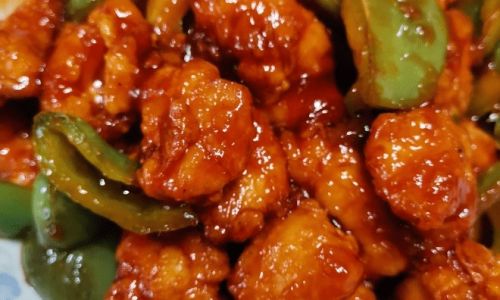
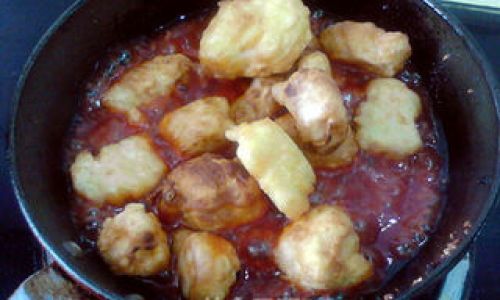
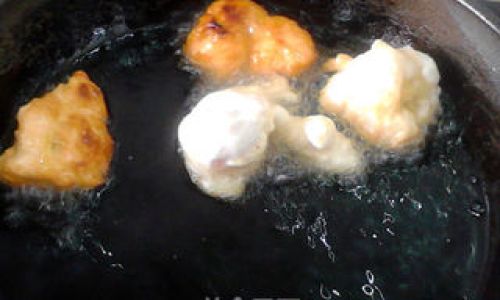
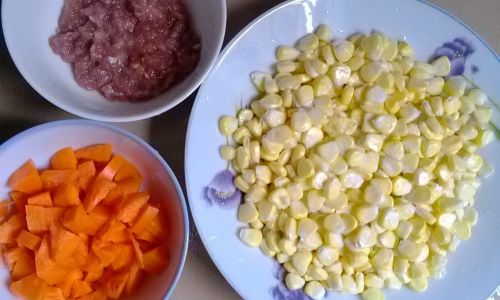

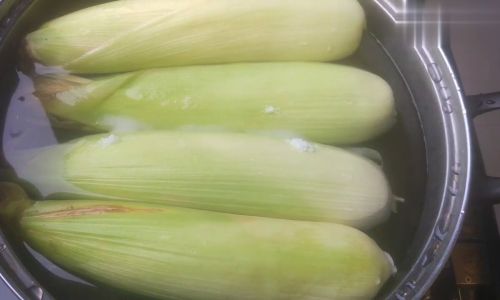
0 comments